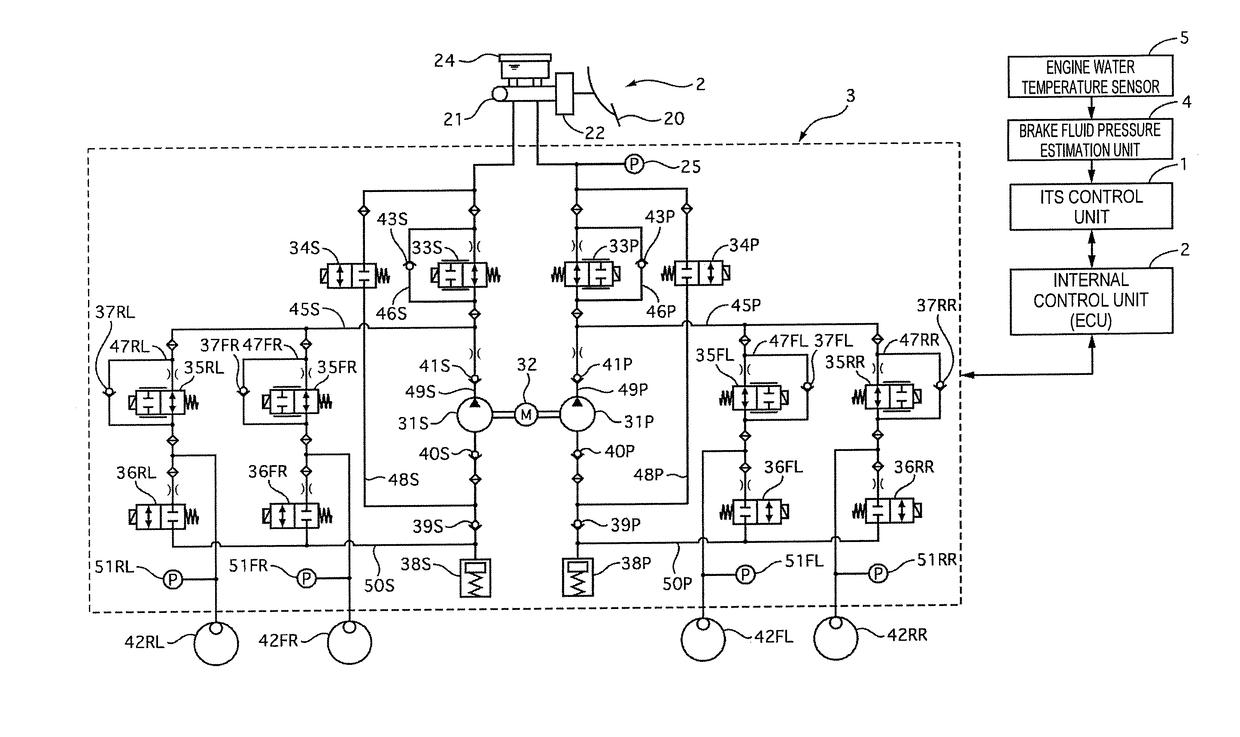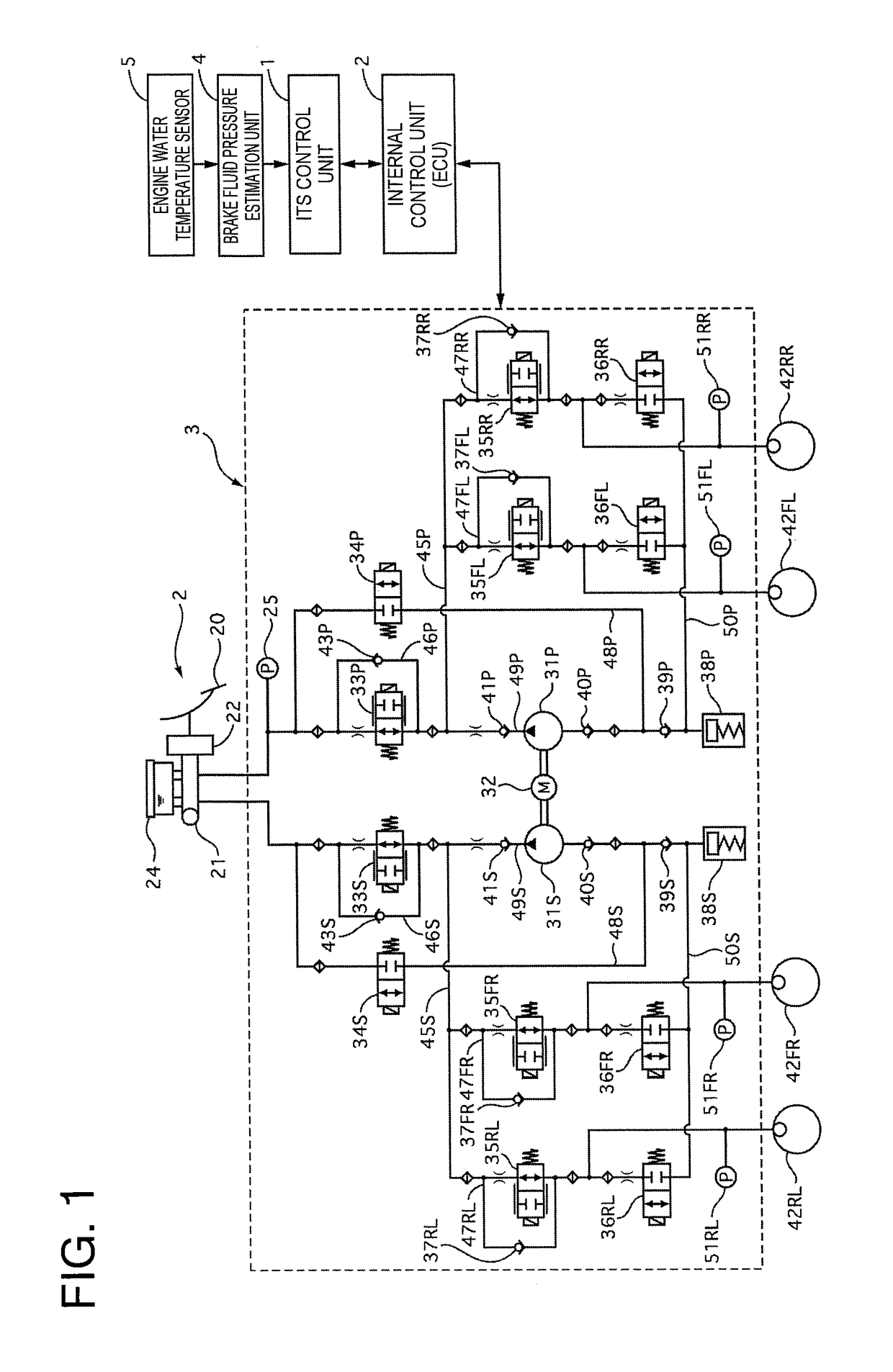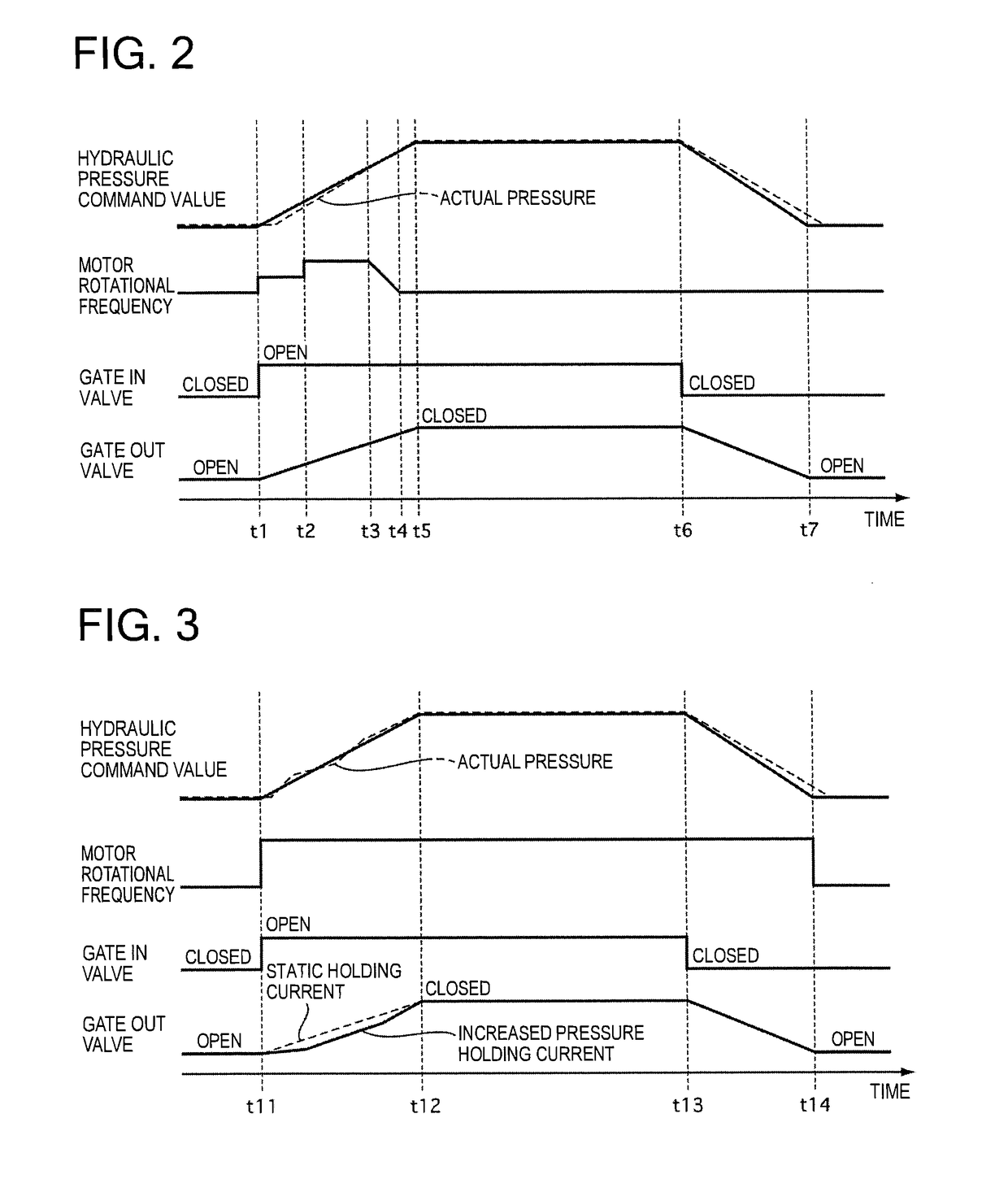Brake control system
- Summary
- Abstract
- Description
- Claims
- Application Information
AI Technical Summary
Benefits of technology
Problems solved by technology
Method used
Image
Examples
embodiment 1
[0022]A brake control system of a first embodiment will be described below.
[Configuration of a Hydraulic Pressure Control Unit]
[0023]FIG. 1 shows a hydraulic pressure circuit located in a hydraulic pressure control unit 3. The hydraulic pressure control unit 3 includes an internal control unit 2. The internal control unit 2 controls a motor 32 and valves on the basis of a variety of information. The internal control unit 2 is connected to an ITS control unit 1 through a controller area network (CAN). The ITS control unit 1 calculates a target hydraulic pressure of each wheel cylinder 42 on the basis of Automatic Emergency Braking (AEB: automatic emergency break), Electronic Stability Control (ESC: skidding prevention device), Adaptive Cruise Control (ACC: automatic adaptive cruise control system), Lane Departure Prevention (LDP: lane departure prevention assist system), etc. The ITS control unit 1 receives an estimate value of brake fluid temperature which is input from a brake flui...
embodiment 2
[0059]Embodiment 2 differs from Embodiment 1 in method of controlling the motor 32. Constituent elements identical to those of Embodiment 1 will be provided with identical reference marks, and descriptions thereof will be omitted. Embodiment 2 implements control for eliminating backlash between the brake pad and the brake disc at the start of braking.
[Hydraulic Pressure Control]
[0060]FIG. 4 is a time chart showing a hydraulic pressure command value calculated by the ITS control unit 1 during ACC or LDP, motor rotational frequency, control currents of the gate in valves 34, and control currents of the gate out valves 33.
[0061]At time t21, the hydraulic pressure command value starts increasing. In response to the increase of the hydraulic pressure command value, the gate in valves 34 are opened. The motor 32 then rotates, and the plunger pumps 31 are activated. The rotational frequency of the motor 32 is set higher than during the first and the second pressure increase of Embodiment 1...
embodiment 3
[0076]Embodiment 3 differs from Embodiment 1 in method of controlling the motor 32. Constituent elements identical to those of Embodiment 1 will be provided with identical reference marks, and descriptions thereof will be omitted. Embodiment 3 changes the setting of the rotational frequency of the motor 32 in accordance with brake fluid temperature.
[Hydraulic Pressure Control]
[0077]FIG. 5 is a time chart showing a hydraulic pressure command value calculated by the ITS control unit 1 during ACC or LDP, motor rotational frequency, control currents of the gate in valves 34, and control currents of the gate out valves 33.
[0078]At time t31, the hydraulic pressure command value starts increasing. In response to the increase of the hydraulic pressure command value, the gate in valves 34 are opened. The motor 32 then rotates, and the plunger pumps 31 are activated. The rotational frequency of the motor 32 is set so that the hydraulic pressure according to the hydraulic pressure command valu...
PUM
 Login to View More
Login to View More Abstract
Description
Claims
Application Information
 Login to View More
Login to View More - R&D
- Intellectual Property
- Life Sciences
- Materials
- Tech Scout
- Unparalleled Data Quality
- Higher Quality Content
- 60% Fewer Hallucinations
Browse by: Latest US Patents, China's latest patents, Technical Efficacy Thesaurus, Application Domain, Technology Topic, Popular Technical Reports.
© 2025 PatSnap. All rights reserved.Legal|Privacy policy|Modern Slavery Act Transparency Statement|Sitemap|About US| Contact US: help@patsnap.com



